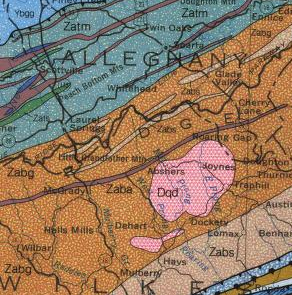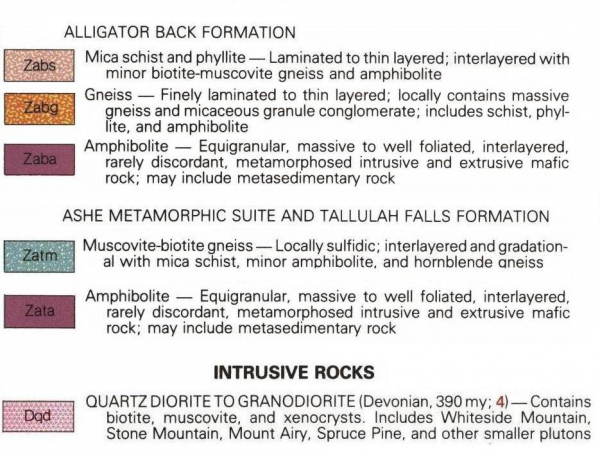Stone mountain state park is Located on over 14,000 acres and in both Wilkes and Alleghany counties just off the Blue Ridge Parkway in North Carolina.

Before Stone Mountain was designated as a State Park, it was home to the Hutchinson Homestead and was settled by descendents of English, German, Irish, French, and Scottish immigrants. During the 1800s, these residents built log cabins, mills, schools and churches in their village.

Hutchinson Homestead and Learning Center: http://www.hutchinsonhomestead.org/
Once the park was created, parts of the Hutchinson Homestead were recreated where they once stood.
On a geologic map of North Carolina Stone Mountain State Park stands out from the rest of the surrounding area. The main attraction is the 700 foot dome relatively void of vegetation. The park is located along the eastern edge of the Blue Ridge Escarpment, which is covered in dense vegetation making the regional geology other than the granite dome indistinguishable. The composition of the rock surrounding the dome is predominately metamorphic rock from previous oceanic sedimentary deposits from the late precambrian. The quartz diorite granite was most likely formed during the last Allegation orogeny, the last in the formation of Appalachian Mountains. It is a younger plutonic mass, witch was intruded into the Alligator Back Formation around 200 Ma. The plutonic magma was once miles below earth’s surface. Pressure from below pushed the mass to the surface while the overlying rock was eroded away. The surrounding formation is metamorphic schist and gneiss from the late Precambrian (900-600 Ma). The Stone Mountain rocks have been dated at 335.6 Ma.


http://www.ncgeology.com/Stone_Mountain_State_Park/pages/stone_mountain_geology_geologic_setting.html